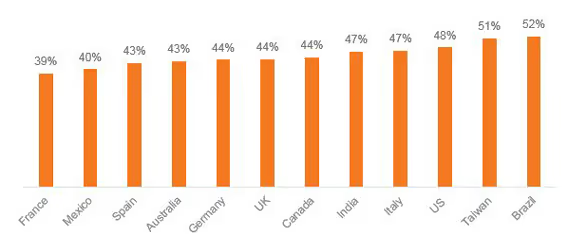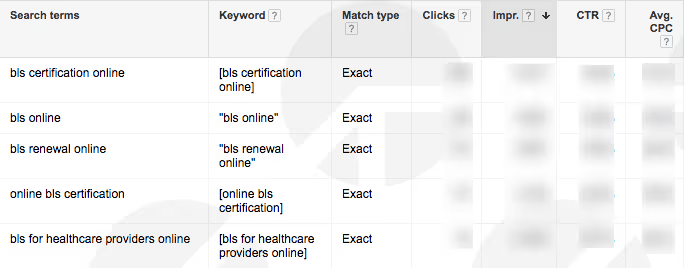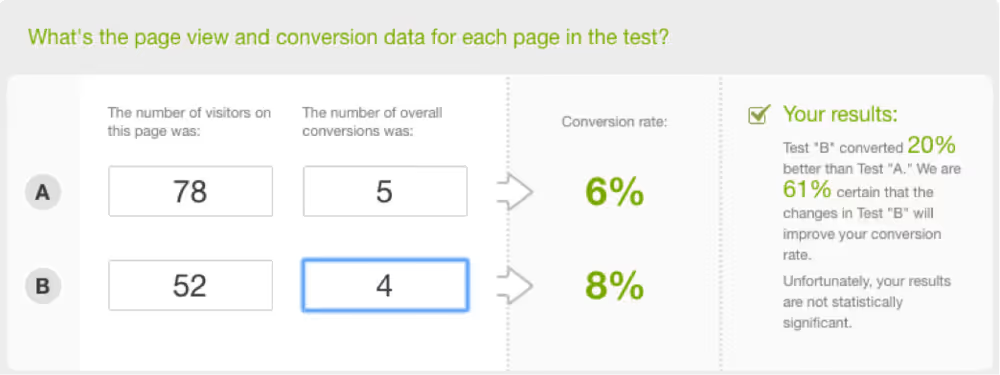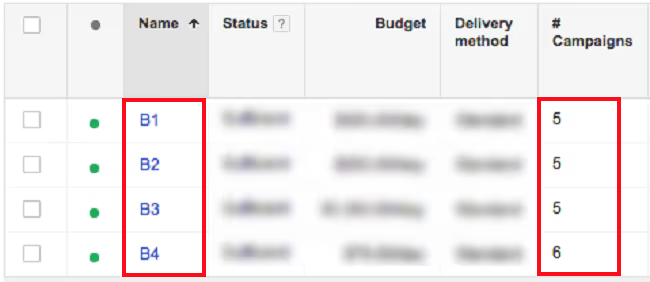
This is the fourth and final installment in a 4-part series covering our BASE methodology for improving e-commerce PPC Program ROI.
“Perfect execution on poor strategy will not
result in good ROI.
— Tom Bukevicius
I tend to agree. I also agree with Alex Birkett:
“Ideas are great, but execution is better. Similarly, ideas aren’t great unless they actually work, and we don’t know if they’ll work until we try them out.
There’s a lot of discussion out there about the importance of creating and implementing a sound PPC strategy. The problem is this -- ad platforms are complex and too little focus is spent on execution technical part. Just because you have a strategy, data, or other assets, doesn’t mean you’ll automatically execute on that strategy. You can complete all the steps of a recipe and gather ingredients to your heart’s desire, but you’ll need to know how to cook to avoid smacking into a brick wall at the very end of your campaign. Don’t be like our unprepared friend here:
Execution (via Giphy)
Okay, joking aside, there are a few handy stats and things to be aware of before I continue.
Why are the numbers so low?
Larry Bossidy, former CEO of AlliedSignal, coauthored a best-selling book titled Execution: The Discipline of Getting Things Done. In his book, he states,
“Strategies most often fail because they aren’t
well executed.
I think this quote does hit the nail on the head, it explains the stats above very well.
With the coverage of our BASE methodology, we’ve covered the business, analytical, and strategic aspects of paid PPC campaigns. Both my partner Tom Bukevicius and I have discussed many of the mistakes we see marketers making every day, and have shown you how to avoid making those same mistakes. Before you’re a full-blown BASE expert, there’s one final step: execution.
Let’s dive into the thick of it, and go over some of the mistakes you might be making whilst executing on your PPC strategy. Of course, I’ll also go over some effective fixes and solutions for those mistakes, too.
Defining a strategy for any new media campaign starts with identifying the audience. There’s no getting around how important that step is. However, according to ComScore, only 48% of digital campaigns in the entire United States are even reaching their target audiences. Take a look below:

% In-Target for Desktop Display, Q1, 2017 (via ComScore)
I’m sure you’ll agree, it’s a simple and straightforward concept, but believe it or not, this is where a lot of paid search marketers fail to execute. I’ll take a look at a few specific targeting misconceptions in AdWords and Bing that will provide you with some clarity.
Misconception #1: Keywords = Search Terms.
Keywords in paid search are not the same as search terms! Did you know that already? Well, that puts you ahead of most.
This misconception is an inaccurate rule-of-thumb that too many marketers rely on. Ultimately, they (marketers) fail to maximize the potential of their AdWords or Bing campaigns, because their understanding of the two terms is fundamentally flawed. This is unfortunate, but expected, and somewhat forgivable -- marketers have a very broad understanding of paid search platforms. It takes a trained PPC professional to spot (and act on) the often-small, yet critical differences in concepts.
Here’s how we at SCUBE define the two terms for our own internal purposes:
Misconception #2: Locations = User Locations.
Adwords and Bing in particular have location settings that could cause your ads to trigger in geographical locations that you’re not interested in. There are three different triggering capacities:
One of our e-commerce clients was targeting the United States and ended up with traffic from Puerto Rico. See here:

Example of Unqualified Traffic From The Wrong Locations (via SCUBE Marketing)
This client’s targeting efforts were going to places they weren’t interested in, or intending to hit.
What to Do About the Mistake?
Remember, your goal is to make sure you’re targeting your intended search terms, along with the right locations.
To make sure you’re targeting those intended search terms, perform the “Search Term Analysis” in your paid search platform. The analysis consists of the following:
To look at your search terms, go to your Keywords tab, and then click the “Search terms” button. You should see something along these lines:

Finding Search Term Report in Google AdWords (via SCUBE Marketing)
The search term report displays the correlation between your keywords, and search terms.
Here’s an example report from one of our clients:

Example of Search Term Report in Google AdWords (via SCUBE Marketing)
In the report, you’ll see three types of search terms. I like to bucket them into 3 categories by relevance and KPIs, which are: conversions, cost per conversion, clicks, and CTR.
Now, to target the right locations, get the facts first. Check where your traffic is coming from. For that you’ll need two reports:
The User Locations Report, which will tell you exactly where the people who saw your ads were located. See the screenshot below for an example:

Example of User Location Report (via SCUBE Marketing)
You’ll also need the Geographic report, which tells you:

Example of Geographic Report (via SCUBE Marketing)
Now you can preview your location data, and start evaluating what to do next. I personally start with two simple steps:
Your evaluation can utilize the same three buckets you would use in a search term analysis, which I’ve outlined above.
To reiterate, those three buckets are:
Onto another major mistake I see all the time.
Another mistake I often see marketers making is coming to inaccurate conclusions about ad performance. They create different ads and start monitoring their results, but they don’t know when to stop, or how to analyze the data they’ve gathered. Plenty of marketers have briefings that look a little too much like this:

Statistics (via Mark Anderson)
So, how can poor analysis impact your data? How does it affect your ROI? Making wrong decisions as to when you should pause or make changes to an ad directly impacts your opportunity to increase sales, which means it directly affects your ROI.
The reality is this -- in PPC, you deal with a lot of data. You’d have to be a something of a math geek, or have an understanding of stats or finance, in order to properly navigate this data. Folks who don't have a math background make mistakes like this quite often. The reason? Stats are not covered in traditional advertising or marketing courses! Seems odd.
So where specifically do marketers fail?
What to Do About the Mistake?
Let’s define the main components: statistical significance, sample size, and statistical power.
Statistical Significance
A result is called statistically significant if it is unlikely to have occurred by chance. It’s a fancy way of saying “stuff that didn’t happen on accident”.
I like numbers, so I always like to measure things. In statistical significance case, it’s measured by a metric called significance level or confidence level. The confidence level you want to be is 95% or higher.
How to calculate it? Use statistical significance calculator. There are a lot of them out there. The one I like the most is A/B Significance Test, developed by Kissmetrics. Very easy to use and it gives exactly what you need.
Let’s take a look how the calculator works.
Below is the screenshot of a campaign with two ads.

Example of A/B Testing in Google AdWords (via SCUBE Marketing)
Let’s enter the required information and see what the calculator tells us:

A/B Significance Test Calculator (via Kissmetrics)
That’s the result I got: “We are 61% certain that the changes in Test "B" will improve your conversion rate. Unfortunately, your results are not statistically significant.” The statistical significance was 61%. Our goal is to have at least 95% of confidence. So at this point we can’t make any decisions, just need to wait until we reach the desired confidence level.
But be careful! Even when you get 95% of statistical significance, don’t pull a trigger and stop the test or start making changes. The statistical significance doesn’t actually tell you what ad performs better. It just gives you a green light to review the data.
Pre-calculated Sample Size
Sample size refers to the size of the testing pool you're using for your A/B tests. It's best to visualize the function of sample sizes using an example: let's say you had a quarter. If you wanted to determine the probability of the coin landing on heads, or the obverse, you would run tests by flipping the coin.heads, or the obverse, you would run tests by flipping the coin.
Where am I getting? Without the proper sample size, your tests are not going to produce statistically accurate or significant data. So, that begs the question -- where should you start? How to determine the right sampling size?
Confusing? Not to worry! Optimizely created a sample-size calculator. What I like about this calculator is that it has a statistical significance factor, which helps you not only to calculate your sample size, but also makes sure you’re dealing with statistically significant data.
How the calculator works

A/B Test Sample Size Calculator (via Optimizely)
Let’s say the conversion rate of the existing ad version is 20%. I want to detect minimum 10% uplift. In this case, keeping the 95% statistical significance as a requirement, I will need 5,300 visitors to stop the test and analyze ads performance.
Statistical Power
Statistical Power is the probability of accurately voiding a null hypothesis -- a hypothesis that the change has no effect.
Statistical power is important because it assigns value or weight to statistical results that may or may not impact their accuracy, and therefore, the confidence you can have in the test results. You want to design your test to have a power of more than 80%.
To simplify your life of calculating the statistical power, I recommend using this calculator (small learning curve, but a breeze once you start plugging your numbers in and having some fun).
For consistency, let’s use the same visitor and conversion numbers we used to determine statistical significance, and see how the calculator works.
First, plug the required numbers in. Then, click on “Apply Changes” -- voila! We get a nice summary and scan of the real A/B testing situation. If you want to dig deeper into the numbers, see the diagram below to find a list of the main statistical components used by the calculator.

A/B Test Statistical Power Calculator (via A/B Testguide)
In our case, the statistical power is only 19%, which is very low. How should you interpret that? Low statistical power means that, if we make a decision now, we can miss a positive change -- thus dismissing an A/B test that would have made a difference. It also means we can miss a negative change, and pass through testing that, in fact, will hurt our metrics. So, the conclusion should be this: don’t make any changes, and wait until we reach the desired level of power.
Onto the next major problem I’m seeing in the marketing world, vis-a-vis execution.
Let me ask you a question -- are you getting full value from your existing target market on your best performing campaigns? Chances are, you’re not. You’re probably losing market share for your target keywords (and locations) due to budget caps.
Keep in mind, the best campaigns should have no budget restrictions. They should give you the space and freedom to play around, so to speak.
Don’t believe me? Check the “Search Lost IS (Budget)” metric in Google AdWords. You’ll find it in the Competitive Metrics category. Once you know how much market share you lost at the account level, you can dig deeper into the campaign level data.
You’ll know exactly which campaigns contribute to the loss. Those gems are your growth opportunities.

Search lost due to budget by campaign (via SCUBE Marketing)
What to do About the Mistake?
Most often I hear “if you are losing Impression Share due to budget, simply increase your daily budget.” Sounds simple -- and it is. I’ll add one thing, though: be smart about it.
Analyze the data you have and increase your daily budgets using the following three performance buckets as guidance:
It’s also important that you utilize shared budgets.
AdWords shared budgets are the way to keep your head above water, especially if you're dealing with a lot of products or have a frequently-rotating inventory.
Follow these steps:

Example of Campaign Prioritization & Budget Allocation in Google AdWords (via SCUBE Marketing)
Congratulations! If you’ve stuck around all this time, you’ve finally reached the conclusion of our series covering our BASE methodology. We’ve covered business, analytics, strategy, and execution. The series has covered four key aspects of successful E-Commerce PPC campaigns, the mistakes we see advertisers making, and how you can avoid making those mistakes so your future campaigns are nothing short of flawless. You’re in the big leagues now.
Execution is just as a vital part of your PPC campaigns as is anything else. If you want to get the most bang for your buck, optimize your ROI for your E-Commerce PPC campaigns, and stop leaving money on the table, you'll need to execute on your strategy logically and intelligently. If business, analytics, and strategy are already taken care of, and you've got your PPC ingredients ready, the execution phase is where you'll need to break out the cookbook and put everything into motion. Take your data, execute, and of course -- win!